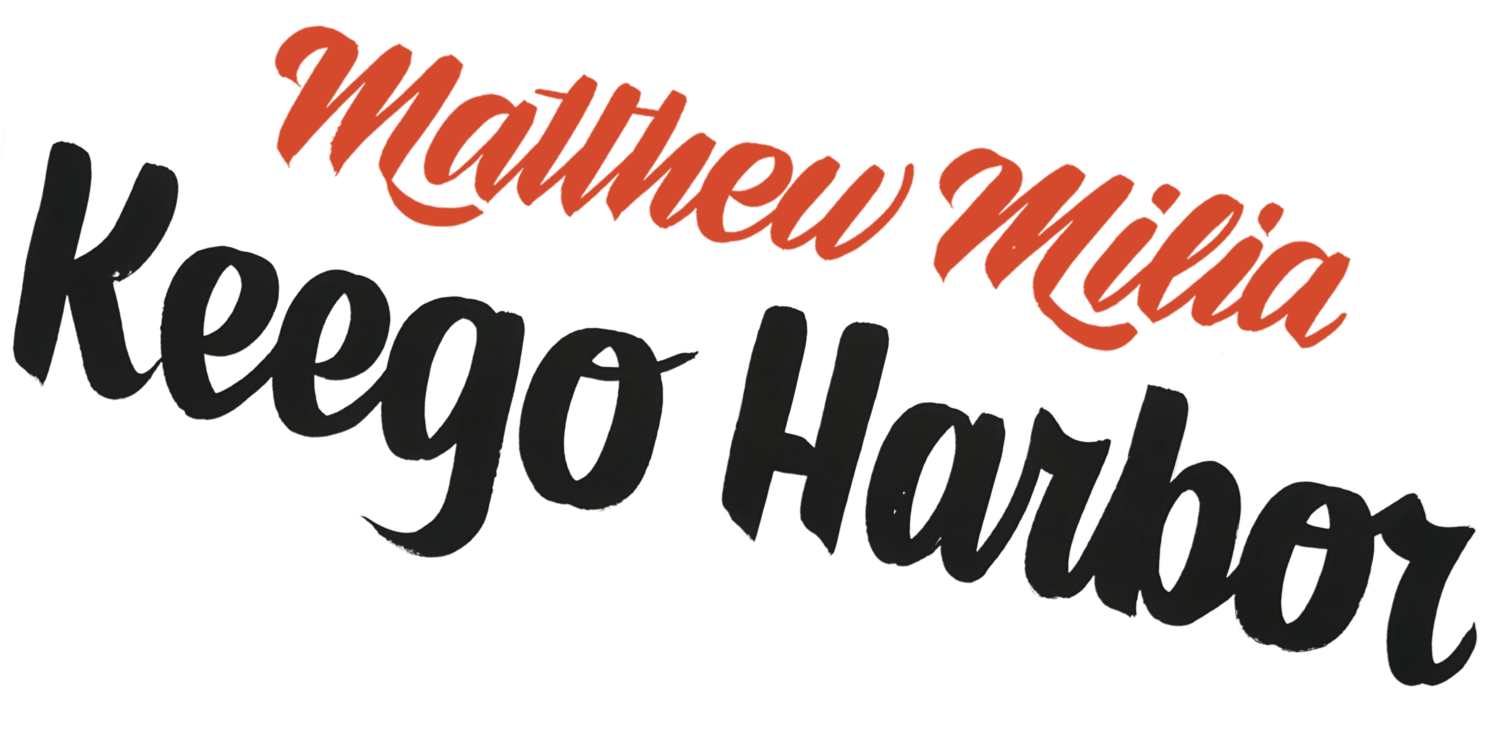Nothing/everything is possible in Keego Harbor.
Most people feel some type of way about their hometown. Some couldn't wait to escape the clutches of familiarity and feelings of being forever stuck fast enough, while others never dared to dream big enough to leave and, instead, planted roots on top of roots next to abandoned video rental stores casting shadows of inevitable emptiness on places where roots had previously been laid and paved over.
For singer-songwriter Matthew Milia, Keego Harbor is more than a hometown, it's a muse. Keego Harbor is, as Milia says, "one of the more interesting parts of Oakland County." He describes it as being where "the meticulously manicured suburban veneer" has eroded, where there are beautiful lake homes and also "people in cut-off shorts on Jet-Skis" only to reveal a place "where the brink of luxury meets the stink of drudgery," as referenced in his latest single, "Keego Harbor" off of the Frontier Ruckus frontman's second solo record of the same name, which came out this summer.
"It's like Raymond Carver short story, where it's the people that are living lives of not so quiet desperation," Milia tells Metro Times. "Those aren't the stories of pure success or triumph. It's a little bit of the other side of the coin," he says. "Falling short is one of the most beautiful human emotions to me, and it's towns like Keego Harbor that are oozing with that."
Milia prefers to write from a local lens and says his fascination, or as he refers to it, a bit of an obsession, with Keego Harbor and his never-ending journey to excavate his memories is not meant to separate himself from those who live and haunt his hometown, the place where his parents met and still own a home. In fact, the song starts off with Milia making a confession: "Someday I think I'll move back to Keego Harbor."
"It's like, I understand the succumbing to a natural source of comfort, as unhealthy as it might be," he says, saying he finds himself often entranced by the beauty and pathos of Instagram accounts and stories of people that he grew up with, who have never left. "It's something internal, like, we are bound to the places that we come from. It's like you're innately tuned to the frequency there, even if you don't want to admit it."
The track's highly nostalgic and appropriately autumnal companion video, directed by Noah Elliott Morrison, is described by Milia as a "haunted scavenger hunt" through time, memory, forgotten ambition, shuttered Dairy Queens, and old sub shops where Milia's friend used to work, and where they watched the tragic events of 9/11 unfold. The video is almost like an UnPure Michigan advert, though honest and unflinching in its portrayal of a town that could easily be a stand-in for a number of small towns across the country that have been ravaged by change and, in some ways, the lack of change.
The beautifully overcast video, edited by Matthew Hallowell and colored by Samuel Mikalonis, captures the muted banality of day-to-day life which was made all the more personal thanks to Milia and Morrison's manufactured moments and objects around Keego Harbor to act as memory triggers or personal Easter Eggs. For instance, there's a croquet set featured which is something Milia's mom (who has starred in some of his videos in the past) won in a silent auction at St. Hugo, the school which Milia attended and the namesake of his debut solo record.
"Maybe I would get a shift, working at that all-night gift shop at the hospital/ Where the brink of luxury/ Meets the stink of drudgery," Milia wistfully dreams in one of the songs many anti-fantasy fantasies. Milia selected the hospital gift shop because he says he spent many nights at St. Joseph Mercy hospital as an asthmatic child.
While Milia's Keego Harbor love letter/cautionary tale may do little to boost tourism, though you never know, what it does is invite listeners to reflect on where they came from and how these forgotten spaces, places, and shuttered storefronts that, like, reopen with a new business nestled inside but never purchase proper signage so there's this banner that was supposed to be temporary and celebratory but eventually fades and droops until a new place moves in — or doesn't — are reflections of our own bleak ambition and unmet expectations.
"We kind of just wanted to let the landscapes do the talking, because they're kind of the stars of the record and of that song," he says. "Because I'm not just interested in how people like myself or my family change with time, but the lifetimes of the spaces themselves that we build and occupied and how they appear permanent, but they're actually glacially shifting or dissolving into, the dreams and promise of a certain strip mall Plaza," Milia details. "I think like these places that are featured in the video, I remember their grand openings.I remember the heyday of these strip malls and 20 years later, the inevitable stagnation that they all reach."
When filming, Milia recalls several takes in which he had to cross the street into the parking lot of a boarded-up Dairy Queen. Something that would turn few heads in Detroit, where he and his wife live, but turned many in Keego Harbor and, appropriately, one encounter with a local seemed to sum up the very spirit of the song and Milia's own journey backward.
"A guy came out of his basement apartment smoking cigarettes and he's like 'Hey, are you famous or something?' to which Milia replied, "No, not really, no."

